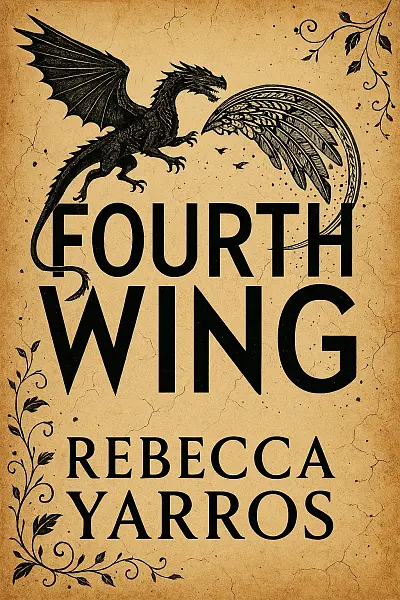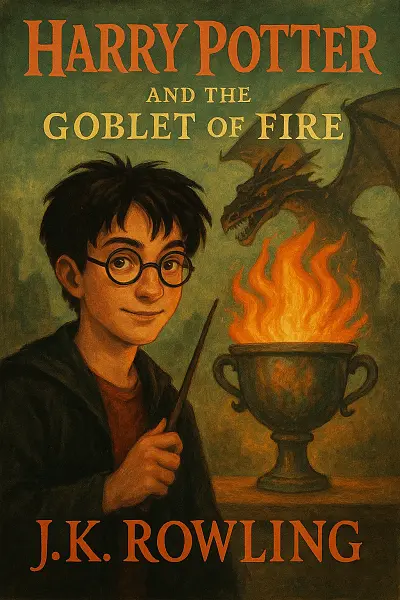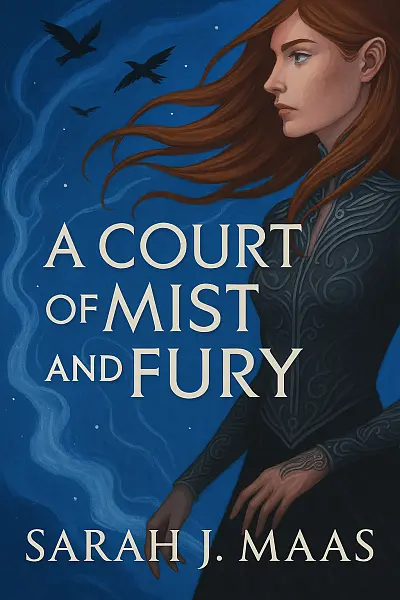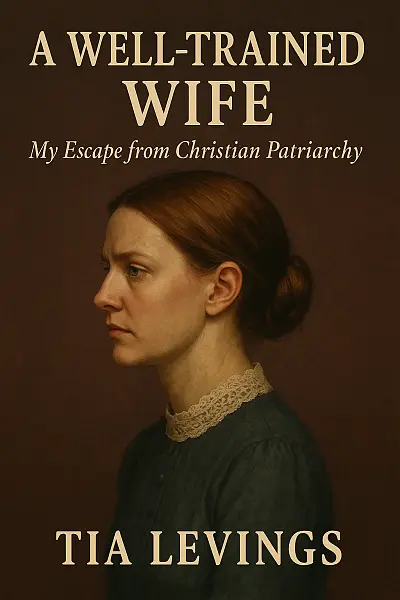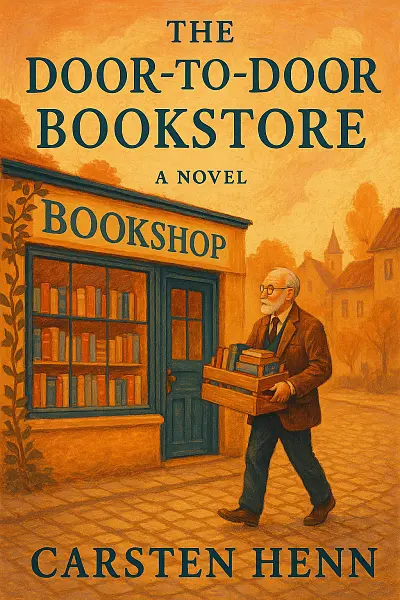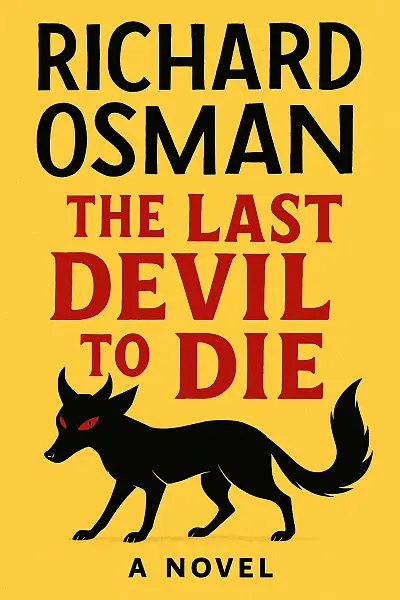
The Last Devil to Die
by: Richard Osman
The Thursday Murder Club enjoys their usual banter in peaceful Coopers Chase, when shocking news jolts their routine—a dear friend from the antiques world has been killed. Faced with the disappearance of a mysterious package he was protecting, the group kicks into sleuthing mode, driven by loyalty and their unyielding need for justice.
Soon, the friends are tangled in a web of art forgers, online scams, and ruthless drug dealers. Emotions run high, safety is on the line, and heartache looms closer than ever. With each clue, they risk more—will they outsmart the darkness, or has their luck finally evaporated?
Witty and warm, Osman's style brings both cozy comfort and chilling danger to every corner of this quirky, heartfelt whodunit.
"“Sometimes the heart’s greatest courage is found not in confronting death, but in risking love once more.”"
Literary Analysis
Writing Style
Atmosphere
Osman's world blends cozy charm with just the right touch of melancholy, setting scenes that breathe life through English village comfort and suspenseful shadows. Expect a gentle undercurrent of tension, balanced by bursts of warmth and wit. The setting pulses with the rhythms of everyday life, even as secrets swirl beneath the surface—think “tea and murder” more than “blood and thunder.”
Prose Style
The writing is breezy, sharp, and sly, with dialogue that sparkles and narration that regularly winks at the reader. Osman’s signature is that friendly, knowing voice—clever without being smug, deeply empathetic, and often laugh-out-loud funny. He invites you in, guiding you with short, punchy sentences and the occasional reflective aside that tugs at the heart. Don’t expect flowery language or long-winded descriptions; instead, savor brisk storytelling peppered with memorable one-liners.
Pacing
This book moves at a steady, comforting clip. The pacing feels measured—never frenetic, but always purposeful. Osman is a master at ratcheting up curiosity, doling out twists and reveals at just the right moments. Slower, introspective moments let the emotional weight sink in between the clues and banter, ensuring you’re equally invested in the heart as well as the whodunit.
Dialogue & Voice
Every character sounds distinct, with conversations that dance between playful jabs, heartfelt confessions, and moments of dry British humor. Banter is plentiful and quick-witted, yet dialogues still manage to feel genuine and occasionally profound. Osman’s people don’t just talk—they relate and reveal, keeping you close to their hearts and secrets.
Mood & Feel
Reading The Last Devil to Die is like joining old friends for a cup of tea on a stormy afternoon: inviting, disarmingly emotional, and unexpectedly thrilling. The book comfortably wears its blend of light-hearted sleuthing and poignant ruminations on aging, friendship, and loss. Expect to laugh, maybe shed a tear, and always feel like you’re part of the Thursday Murder Club circle.
Key Takeaways
- Elizabeth faces her toughest farewell yet—Osman pulls no punches with the emotional gut-punch in the final act
- Box of antique mugs becomes the deadliest McGuffin—who thought ceramics could be so sinister?
- Pure Osmanesque wit: dry humor and sly banter serve up genuine laughs even in the darkest corners
- Choppy North Sea, smuggled heroin, and a crossword puzzle—pure Thursday Murder Club chaos
- Ron’s rage and heartbreak burst through—grief, loyalty, and bubbling fury collide in one unforgettable scene
- Joyce’s diary entries: still the perfect cocktail of naivety, honesty, and accidental detective genius
- Tangled loyalties and a devilish plot twist at the antiques fair—nobody’s secrets are safe

Murder strikes again—only friendship and wit can solve the final case.
Reader Insights
Who Should Read This
If you love quirky mysteries with a big heart, The Last Devil to Die is totally your cup of tea. It’s especially perfect for fans of Richard Osman’s earlier Thursday Murder Club books—if you fell for that crew of elders solving crimes over tea and biscuits, you’ll feel right at home here. Think cozy British village vibes, clever puzzles, and a strong dose of humor mixed with real tenderness.
Who will absolutely devour this:
- Anyone into cozy mysteries—especially if you prefer clever whodunits without overly gruesome details
- Readers who love quirky, loveable characters and witty banter
- Fans of books like Agatha Christie, Alexander McCall Smith, or Janet Evanovich
- If you love stories about friendship, aging, and found family—this one’s got that in spades
Who might want to skip it:
- If you’re looking for high-octane thrillers or dark, gritty crime—this probably isn’t your speed
- Readers who get impatient with slower pacing or tangents about characters’ personal lives
- If you need super intense action scenes or jaw-dropping plot twists, you might find this a bit on the gentle side
Honestly, if you want a mystery that feels like curling up with a warm blanket—charming, clever, and surprisingly thoughtful about life’s twisty paths—this is one to add to your stack. If you prefer your mysteries with a bit more edge or constant adrenaline, there are probably better picks out there for you.
Story Overview
Ready for another twisty, charming adventure with the Thursday Murder Club?
In "The Last Devil to Die," the quirky quartet returns, diving headfirst into a brand-new mystery when a friend is found dead under suspicious circumstances and a dangerous package goes missing. As secrets unravel among the sleepy towns and lively retirement communities, Elizabeth, Joyce, Ron, and Ibrahim find themselves up against deadly stakes and an ever-ticking clock. Brimming with witty banter, heartfelt moments, and Osman's trademark clever plotting, this latest installment is a fun, suspenseful romp that deepens both the bonds and the dangers facing our favorite amateur sleuths.
Main Characters
-
Elizabeth Best: The clever, unflappable leader of the Thursday Murder Club. She faces personal loss and moral dilemmas, all while anchoring the group's investigation with her trademark resolve.
-
Joyce Meadowcroft: An upbeat ex-nurse whose diary entries provide wit and warmth. Joyce's curiosity and people skills keep her central to both the sleuthing and the club's camaraderie.
-
Ron Ritchie: A gruff but loyal former union leader. His stubbornness puts him in tricky spots, but his bravery and heart are always on display as the mystery unfolds.
-
Ibrahim Arif: The group’s analytical psychologist, methodical and insightful. Ibrahim’s cautious, logical approach is a steadying force, especially as chaos and grief threaten the club’s unity.
-
Stephen: Elizabeth’s brilliant but ailing husband. His dementia is a poignant thread—his decline deeply affects Elizabeth and brings themes of love, memory, and loss to the forefront.
If You Loved This Book
If you're a fan of witty, character-driven mysteries like The Thursday Murder Club, The Last Devil to Die will give you that same charmingly eccentric ensemble, reminiscent of Louise Penny’s beloved Chief Inspector Gamache series—Osman’s blend of quirky warmth and clever puzzles is a total treat for those who love sleuths with heart. There's a definite nod to Agatha Christie, too, in the way Osman weaves intricate clues through a delightfully British landscape; you’ll spot plenty of those cozy mystery hallmarks—think sharp dialogue, unexpected red herrings, and a web of secrets hidden beneath a genteel surface.
On the screen side, the book echoes the spirit of Only Murders in the Building, especially in how it centers on unlikely amateur detectives whose chemistry, banter, and idiosyncrasies are as compelling as the mystery itself. That same mix of humor, suspense, and genuine emotional moments runs through Osman’s pages, making each twist not just puzzling, but deeply satisfying. If you gravitate toward stories where solving the crime is just as much about the friendships along the way, you’ll find The Last Devil to Die irresistibly familiar—and thoroughly original.
Expert Review
What does it mean to keep hope flickering in a world teetering between mischief and mortality? In The Last Devil to Die, Richard Osman asks if wisdom, camaraderie, and a dash of irreverence can stave off the loneliness and losses that come with age. With each twist of the Thursday Murder Club’s caper, Osman invites readers to consider the cost—and necessity—of refusing to go gentle into that good night.
Osman’s prose remains as crisp and inviting as ever, blending sly humor with an undercurrent of melancholy. He weaves multiple points of view, skillfully giving each character a distinctive voice—Elizabeth’s cool pragmatism, Joyce’s comic innocence, Ron’s righteous bluster, and Ibrahim’s quiet insight. Dialogue sparkles with wit, and Osman's signature asides often break tension just as a scene veers toward sentimentality. The pacing deftly manages a crowded plot: revelations land at the right moments, with misdirections that feel earned rather than contrived. At its best, Osman's language achieves an effortless charm, particularly in those brief, epistolary interludes that double as windows into loneliness and longing. However, the juggling act sometimes falters—secondary threads occasionally crowd the narrative, risking muddle amid momentum.
The Last Devil to Die is about more than solving homicides; it grapples with grief, memory, and the irreducible value of friendship when futures grow short. Osman’s elderly sleuths aren’t mere comic relief—they face cognitive decline, heartbreak, and mortality with courage but not denial. The novel interrogates vulnerability, both online and off, through plotlines involving fraud and deception, slyly commenting on the dangers of digital life for the unwary. The emotional stakes feel urgent—loss, regret, and the hunger to make meaning before it’s too late reverberate through the story. The book’s true artistry lies in how Osman entwines laughter and loss, suggesting that the greatest defiance against the darkness may be a ready joke and an outstretched hand. By framing classic mystery puzzles around profoundly human questions, Osman gives the cozy crime genre real bite.
Within the landscape of contemporary “cozy crime,” Osman stands out by fusing the genre’s gentle pleasures with real psychological insight. While drawing on traditions of Christie-esque deduction and small-town eccentricity, The Last Devil to Die deepens both Osman’s own Thursday Murder Club series and the whodunit form itself. Fans of Osman's earlier volumes will find the stakes higher, emotions rawer, the laughs more bittersweet—a book both honoring and gently subverting the expectations of its genre.
Yet, this ambition isn’t without flaws: at times, the intricate web of suspects and subplots threatens to overwhelm emotional clarity. Occasionally, jokes land too broadly or pathos drifts into sentimentality. Still, Osman’s generosity and narrative cleverness far outweigh these stumbles. The Last Devil to Die is a layered, affecting meditation on aging, courage, and the enduring thrill of the chase—one of the rare mysteries whose heart is as gripping as its puzzle.
Community Reviews
So I was just MINDING MY OWN BUSINESS and then Joyce drops that line about loss and it hit like a freight train. Suddenly I’m rethinking my entire life. Osman really knows how to land an emotional punch, huh?
There’s this bit where Joyce just drops a truth bomb like it’s nothing—kept echoing in my head at 3am. Osman's wit is brutal and gentle all at once, and now I'm side-eyeing all my elderly neighbors with suspicion.
Not sure if it’s just me, but after finishing The Last Devil to Die, I wandered my apartment for hours, convinced someone was lurking in every corner. Osman’s twists totally wrecked any hope I had for a peaceful night.
Holy chaos, Elizabeth’s sharp wit practically jumped off the page and hijacked my evening. I meant to read one chapter but stayed up until 3am. Sleep? Ruined. But worth it for every twist and gasp!
Honestly, I finished The Last Devil to Die and couldn't stop thinking about Beth's quiet persistence. That scene where she faces the truth? I had to put the book down and breathe. Totally haunted me all week.
Cultural Context & Discussion
Local Perspective
The Last Devil to Die by Richard Osman strikes a real chord with UK readers, partly because its cozy crime vibe feels like a warm hug wrapped in a nostalgic British blanket.
- Themes of community, aging, and resilience echo the UK's deep respect for local clubs, neighborly bonds, and the rich tradition of “pub culture”. The Thursday Murder Club's camaraderie brings back memories of wartime solidarity and post-war “Blitz spirit.”
- Plot threads about isolation among the elderly hit home, reflecting ongoing UK conversations about elder care and community support, especially post-pandemic.
- Osman's sharply witty dialogue aligns with classic British humor—think Agatha Christie meets Alan Bennett—so British readers adore the fusion of mischief, manners, and gentle mockery of authority.
- The setting in a retirement village, seen as a somewhat mundane or overlooked British backdrop, is transformed into a stage for cleverness, resilience, and adventure—cheekily subverting the stiff-upper-lip stereotype.
In short, the book resonates here because it both celebrates and gently pokes fun at cherished local quirks, perfectly weaving cultural nostalgia with very contemporary empathy.
Points of Discussion
Notable Achievement / Cultural Impact
– The Last Devil to Die by Richard Osman debuted as a bestseller, further cementing the phenomenal success of the Thursday Murder Club series.
– The series has attracted a huge international readership, making Osman one of the UK’s most beloved contemporary crime novelists and sparking renewed interest in cozy mysteries for all ages.
It’s definitely made its mark as a charming, feel-good crime novel that has united readers across generations in their love of mysteries and quirky senior sleuths!


